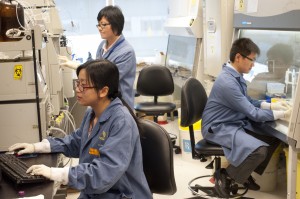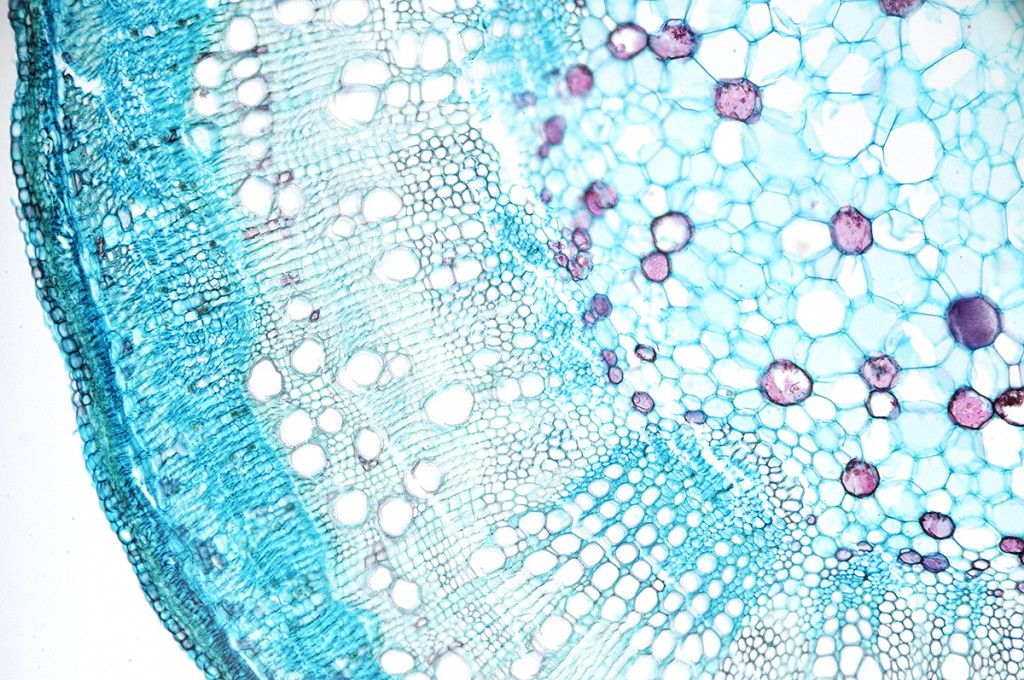Every six weeks, MaRS Innovation’s marketing and communications manager writes a guest post for the MaRS Discovery District blog profiling MI’s activities or one of our start-up companies. This post coincided with World Cancer Day.
 What if you could use a cancer tumour’s proteomic profile to make it easier to target and destroy?
What if you could use a cancer tumour’s proteomic profile to make it easier to target and destroy?
Targeting specific proteins on the surface of individual tumours—or, more precisely, targeting a cell receptor that naturally allows substances to pass into a cell—would allow clinicians to more effectively deliver drugs designed to deactivate cancer-promoting genes within the tumour, while minimizing the addition of toxins to the patient’s body.
Personalized medicine research in Toronto also benefited from a recent $50 million donation to support Princess Margaret Hospital (part of the University Health Network). Read and watch the news announcement on BioTechnology Focus.
This is personalized medicine’s promise for cancer treatment: targeted therapies that stand a better chance of success, with reduced side effects, based on the unique profile of a patient’s tumour, either administered on their own or in combination with traditional chemotherapy.

And DLVR Therapeutics Inc., which was spun off from University Health Network (UHN) research and technology with early-stage investment and business development support from MaRS Innovation and the Ontario Institute for Cancer Research, believes they have discovered the ideal molecular Trojan horse.
Their ultra-small technology, which is nontoxic, biocompatible and biodegradable, represents a novel and potentially more effective means of delivering RNA interference (RNAi) sequences to cancer cells.
Discovered in 1998 by Andrew Z. Fire and Craig C. Mello, later recipients of the 2006 Nobel Prize in Physiology or Medicine, RNAi interference provides a new mechanism for gene regulation using a cell’s basic biochemical machinery.
“RNAi molecules, called siRNA (or small interfering RNA) for therapeutic purposes, bind to gene products in the cell to decrease or down-regulate their activity, such as protein production,” explains Frank Gleeson, CEO of DLVR. “If you can deliver the correct RNAi sequence into a cancer cell without it being broken down by the cell’s natural degradation process, you have the potential to down-regulate cancer-promoting genes and improve cancer treatment with less toxicity.”
The pharmaceutical industry invested considerable resources into siRNA drug development following Andrew and Craig’s discovery to find ways to down-regulate disease-causing genes. So far, no company has produced a new therapeutic for treating cancer, though clinical trials are underway.
Two big challenges

“There are two big challenges with many existing siRNA delivery technologies,” says Frank. “First, you need a targeting agent to bind and adhere to a specific receptor on the cancer cell. Second, to deliver the drug itself, the particle must also clear the cell’s endosomal compartment, an environment that is hostile to intruding foreign objects, and enter the cytosol where the RNA machinery is active. At that point, you’ve still got to have enough of the drug intact to deactivate the cancer-promoting gene you’re targeting.”
Enter Gang Zheng, senior scientist with UHN’s Ontario Cancer Institute and professor of medical biophysics at the University of Toronto.
Enter the Trojan horse

He observed that high-density lipoprotein (HDL, also known by nutritionists everywhere as “good” cholesterol) transports cholesterol to the liver via a surface receptor (SR-B1 or scavenger receptor B1) that coincidentally appears on many human tumour cells, including ovarian, prostate and breast cancer.
Better still, the way that HDL and the SR-B1 receptor interact at the cell membrane enables the contents of HDL (that is, cholesterol) to be transferred directly into the cytosol of liver cells, bypassing endosomal degradation through the cell’s interior.
Gang recognized that this natural process could help solve the challenge of delivering RNAi to the cytosol of tumour cells.
He and his team have invented a patentable nanoparticle that mimics HDL’s functionality to transport siRNA, acting as the proverbial Trojan horse.
This nanoparticle self-assembles into a sphere roughly the same size as natural HDL and can load and transport siRNA directly into the cytosol of tumour cells.
“Our experimental data suggest that SR-B1 recognizes Gang’s molecule, which is capable of delivering an siRNA sequence and down-regulating cancer-promoting genes of interest, blunting tumour growth,” says Frank. “We’re focused now on demonstrating our technology’s therapeutic potential as broadly as possible through our research and in collaboration with pharmaceutical partners.”
Partnership with a major multinational pharmaceutical
Big pharmaceutical companies and venture capital investors are following DLVR’s progress with interest.
One major multinational company, which cannot be named due to confidentiality reasons, has already partnered with DLVR. Together, they are exploring ways to down-regulate disease-causing genes.
“Our partner, who has deep expertise in the siRNA space, has seen positive results in DLVR’s technology that exceed what they’ve experienced with competing approaches,” says Frank. “We’re working closely with them on proof-of-concept and feasibility studies this year. When we’ve got those results, we’ll be in a better position to decide where to take this partnership.”
DLVR has raised approximately $2 million in cash and in-kind contributions and will seek a Series A financing round of $8 to $12 million in 2014.
By Elizabeth Monier-Williams, marketing and communications manager.

